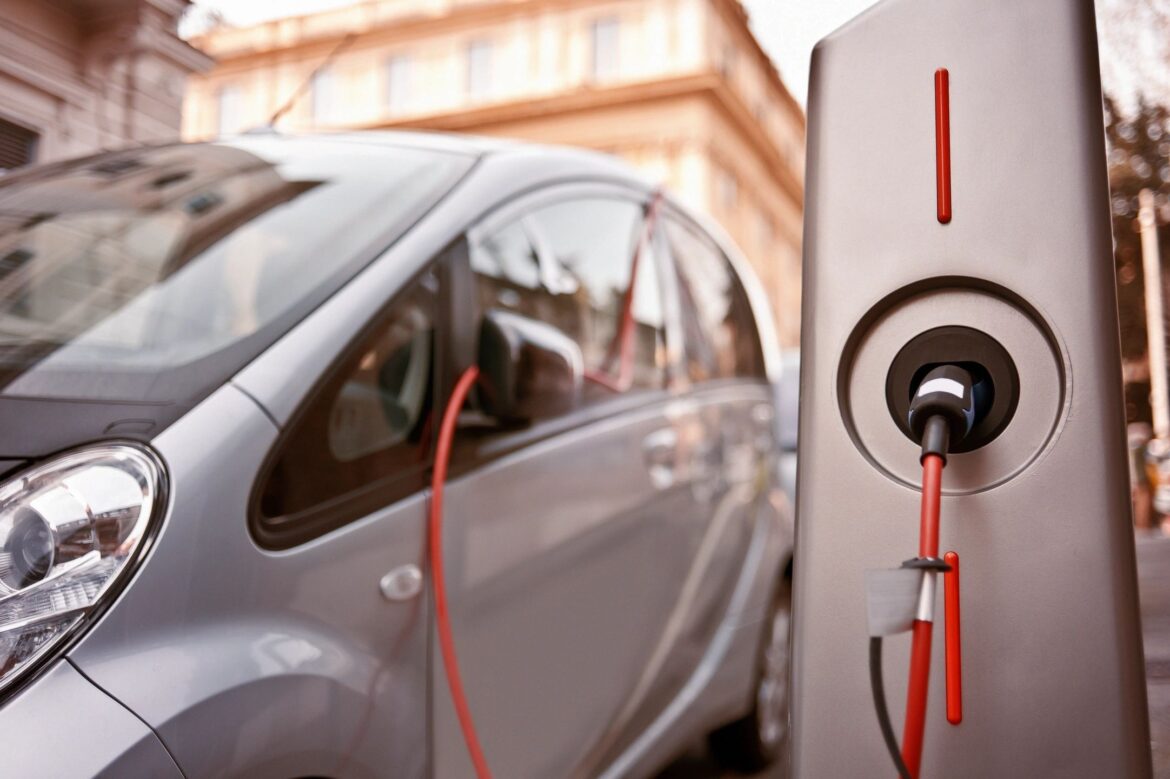 01
Apr
01
Apr
Research Insights: Fire Safety for Electric Vehicles and Other Modern Vehicles in Parking Structures
- 0 Comment(s)
- April 1, 2025
Over the past few years, the electric vehicle (EV) market has seen remarkable growth. In 2023, global sales of EVs reached 10 million, with market share climbing to 14%. This growth is largely driven by advances in battery technology, decreasing costs, government policies supporting EV adoption, and expanded charging infrastructure.
Major automakers are also increasingly investing in EVs. This offers a wide variety of models to meet the growing demand for sustainable transportation. Consumer awareness and demand, particularly in Europe, China, and North America, are stronger than ever.
However, this rapid shift to EVs, hydrogen fuel cells, and hybrid vehicles has brought about significant changes in vehicle design and materials. These changes have raised concerns in the fire protection community. Vehicles today are heavier and use a larger proportion of plastic components.
Additionally, the fire hazards associated with EVs differ from those posed by traditional internal combustion engine (ICE) vehicles. These new challenges require a closer look at fire protection measures, particularly in parking structures.
The Need for Reassessing Fire Safety for Electric Vehicles
Although vehicle fires are relatively common, large-scale fires in parking garages are rare. However, when they do occur, they can result in significant economic losses. Past incidents, such as fires at Stavanger Airport, Liverpool’s Echo Arena, and Luton Airport, illustrate this risk
In August, an EV fire in a South Korean parking garage spread rapidly-damaging hundreds of vehicles and prompting evacuations of nearby residents. This triggered debate over whether EVs should be allowed in the country’s underground parking garages.
These events emphasize the need for reclassifying fire hazards and reassessing fire safety for electric vehicles in parking structures. Stakeholders, including the National Fire Protection Association (NFPA®) and its research affiliate, the Fire Protection Research Foundation (FPRF), have been receiving numerous questions about how EVs affect fire safety in parking structures.
Some of the most common questions include:
- What are the key differences between modern and legacy vehicles, and how have they evolved?
- How does the fire risk of an EV compare to that of an ICE vehicle?
- Are existing codes and standards sufficient for fire protection?
To answer these questions, the Fire Protection Research Foundation conducted a Phase II research study. This followed up on a 2020 literature review to provide better data, and insights, and identify knowledge gaps that require experimental testing.
Key Findings: How Do Modern Vehicles Differ?
One major change in modern vehicles is the increased use of plastics. In 2021, the average vehicle contained 411 lbs (186 kg) of plastics. This makes up about 9.6% of the vehicle’s total weight. In comparison, vehicles from the 1970s had less than 3% plastic content. The increase in plastic components has important implications for fire safety.
Plastics are highly combustible and can contribute to higher heat release rates, longer burn durations and greater fire spread in parking structures. This is a significant shift from older vehicles, which contain less plastic. As a result, it posed a lower fire risk.
The increased use of plastic materials in modern vehicles, including EVs, is a key factor in altering fire dynamics. This makes traditional fire test data less applicable to current vehicle fire scenarios.
Comparing the Fire Hazard of EVs to Traditional ICE Vehicles
The heat release rate is a key factor in understanding the fire behavior of both EVs and ICE vehicles. It measures how much energy a fire produces over time and indicates how quickly a fire burns through fuel and releases heat.
Although EV and ICE vehicle fires have different peak heat release rates, their total heat release is similar. This suggests that, overall, both vehicle types pose similar fire hazards in terms of heat generation.
However, several other factors significantly influence fire development and hazard levels, including ignition method, location, vehicle age, and ventilation conditions.
According to available test data, vehicle fires—whether from EVs or ICE vehicles—often exceed a heat flux threshold of 25 kW/m². This threshold is necessary because it is the level at which nearby combustibles can ignite. This highlights the high risk of fire spreading to adjacent vehicles in parking structures, particularly when there is no sprinkler protection.
Table: Comparing Fire Hazards of EVs and ICEVs
| EV | ICE | ||
| Fuel Source | Lithium-ion batteries | Gasoline | |
| Fire Causes | Short circuit, puncture, overheating, overcharging, over-discharging | Overheating, loose electrical components, worn-out parts, or fuel and oil leaks | |
| Suppression Time | ~60–90+ minutes | ~30 minutes | |
| Water Usage (manual) | Thousands of gallons required, sustained water supply | ∼500 gallons | |
| Reignition Potential | Likely, and fairly common | Rare | |
| Fire Size | Avg Heat Release Rate: 1.5–8+ MW
Avg Total Heat Release: 5.9 GJ
Can be large if the initiating vehicle fire is allowed to propagate to an adjacent vehicle, but fires can typically be contained to one vehicle with protection by automatic sprinklers or intervention by the fire service prior to spread |
Avg Heat Release Rate: 6.5–8 MW
Avg Total Heat Release: 5.9 GJ
Can be large if the initiating vehicle fire is allowed to propagate to an adjacent vehicle, but fires can typically be contained to one vehicle with protection by automatic sprinklers or intervention by the fire service prior to spread |
|
| Toxicity of Runoff |
|
pH: 2.6–2.8, Contains lead, copper, PAHs, volatile organic compounds, toxic to aquatic species | |
| Special Post-Fire Considerations | Often towed, recommended placement 50 ft away due to reignition risk | Inspect vehicle to assess damage and repair possibilities | |
| Additional Hazards | Toxic gas release, electrocution, projectiles and explosions, reignition risk, and challenges for secondary responders | Toxic gas release, combustibles still accessible (e.g., full gas tank) |
Is the Current Protection Guidance in Applicable Codes and Standards Appropriate for Fire Safety for Electric Vehicles?
The codes and standards governing parking garage fire protection have evolved significantly over time. According to NFPA 88A, Standard for Parking Structures, sprinkler protection is now mandatory in all parking structures. Additionally, several codes and standards have raised the required sprinkler density for parking garages.
Notably, NFPA 13, Standard for the Installation of Automatic Sprinkler Systems, has reclassified these structures from Ordinary Hazard Group 1 (~0.15 gpm/ft²) to Ordinary Hazard Group 2 (~0.2 gpm/ft²). This reflects the increased fire risks in these environments.
However, the Fire Protection Research Foundation (FPRF) review of current codes and standards highlighted a gap. There are very few national requirements for fire protection in automated parking structures or vertical stackers exceeding two tiers in height.
As a result, some municipalities have taken matters into their own hands. They have enacted local fire protection regulations specifically for these types of parking structures.
Sprinkler Systems and Their Effectiveness in Fire Safety for Electric Vehicles
The FPRF’s literature review identified several vehicle fire tests that incorporated sprinklers to assess whether sprinklers could prevent fire spread to adjacent vehicles.
One such study, conducted by Arvidson and Westlund, tested sprinklers with a density of 10 mm/minute. This density falls between the Ordinary Hazard Group 2 and Extra Hazard Group 1 design densities in the U.S. During four tests—two with internal combustion engine vehicles (ICEVs) and two with battery electric vehicles (BEVs). The results showed that the BEV fires did not spread to neighboring vehicles when sprinkler protection was used.
Another study, conducted by the Building Research Establishment (BRE), tested a sprinkler system with a British Standard Ordinary Hazard Group 2 density (which is between Light Hazard and Ordinary Hazard Group 1 densities in the U.S.). The study found that the fire did not spread to nearby vehicles under sprinkler protection. In contrast, a similar test without sprinklers resulted in fire spreading to all three vehicles involved.
While the existing data suggests that sprinklers can effectively control fires and prevent them from spreading beyond the initial vehicle, the optimal sprinkler density required to prevent vehicle-to-vehicle fire spread in parking garages remains unclear.
Current research on the effectiveness of sprinklers in parking garages, particularly for modern vehicles like EVs, is still limited. More research is necessary to design sprinkler systems that can more effectively mitigate fire risks, especially as vehicle technologies continue to evolve.
Key Gaps in Fire Safety for Electric Vehicles
Through a comprehensive review of parking structure characteristics, incident case studies, the latest fire test data, and fire statistics, three major gaps were identified in fire safety for electric vehicles in parking garages:
NFPA 13 Hazard Classification for Modern Vehicles
The current hazard classification for modern vehicles in parking garages under NFPA 13 lacks sufficient testing data. Despite evolving codes requiring sprinklers and increased water density, there is no clear technical justification for the specific sprinkler densities used in modern parking structures.
This gap needs addressing to better cater to the fire risks posed by newer vehicle types, especially EVs.
Extreme Fire Risk Conditions
The exact factors contributing to the most severe vehicle fire scenarios in enclosed structures remain poorly understood.
Factors such as sprinkler placement, fire ignition location, vehicle size, and window positions can all significantly affect fire development and spread. Further studies are needed to understand how these variables interact, particularly with the rise of electric vehicles.
Fire Safety in Vertical Vehicle Stackers and Automated Parking Structures
There is a significant lack of experimental data regarding fire safety in automated parking structures or vertical stackers. As these systems grow in popularity, the current guidelines on fire safety in such environments are limited.
More research is needed to determine the most effective fire protection measures for these modern parking structures. They may house electric vehicles with different fire risks.
To address these gaps, the Fire Protection Research Foundation (FPRF) has developed a comprehensive testing plan. This plan outlines a test matrix, necessary data, and evaluation criteria to further explore fire hazards in parking garages. These proposed testing initiatives aim to fill in the knowledge gaps and improve fire protection strategies for modern vehicles, especially electric vehicles.
As vehicle technologies and parking structure designs continue to evolve, it is necessary to adapt fire safety measures accordingly. With the right research and updated standards, we can create safer environments for electric vehicles in parking garages and other facilities.

